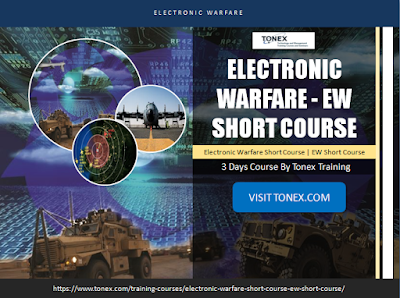
Length: 3 Days
Electronic warfare is any activity including the utilization of the electromagnetic spectrum or directed energy to control the spectrum, attack an enemy, or impede enemy assaults. The reason for electronic warfare is to deny the adversary the advantage of, and guarantee amicable unimpeded access to, the EM spectrum.
Electronic warfare uses centered energy, typically radio waves or laser light, to befuddle or debilitate an enemy's electronics. It can likewise include tuning in — gathering an enemy's radio flags or detecting the radar of an approaching rocket.
Electronic Warfare Short Course, EW Short Course covers the fundamentals of Electronic Warfare (EW) intended for analysts, engineers, project managers, and electronic warfare professionals who build, manage and operate electronic warfare systems.
Learning Objectives:
Upon fulfillment of Electronic Warfare Short Course, the participants can:
Rundown premise of Electronic Warfare (EW) ideas, engineering and methods
Explore the utilization of electronic warfare ideas to ground, airborne and maritime surface warfare
Depict the key ideas of electromagnetic field theory
Depict prorogation models, correspondence catch and sticking performance forecast
Understand the nuts and bolts of radars and radar cross segment
Depict EW and reconnaissance beneficiary framework configuration exchange off
Give instances of Directed energy weapons and stealth
Depict how hunt and following radars work
Course Agenda:
Electronic Warfare EW short course main agendas are
Basics of Electronic Warfare (EW)
Electronic Warfare (EW) Key Concepts
Principles of Intelligence, Surveillance, Reconnaissance (ISR) Applied in EW
Electronic Warfare Functions
Electronic Warfare Capabilities
Electronic Warfare Technology
Key Technology Enablers of Modern and Emerging RADAR Systems
Electronic Warfare Systems Engineering and Modeling
Request more information. Visit Tonex course link
Comments
Post a Comment